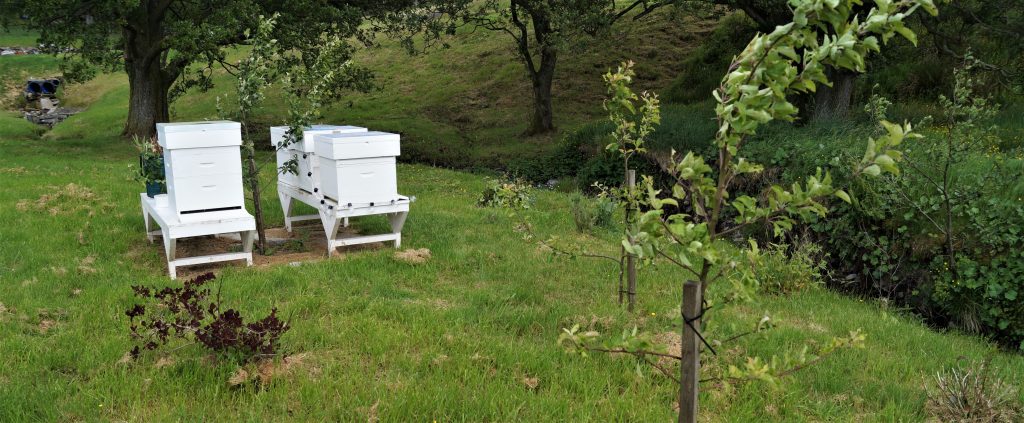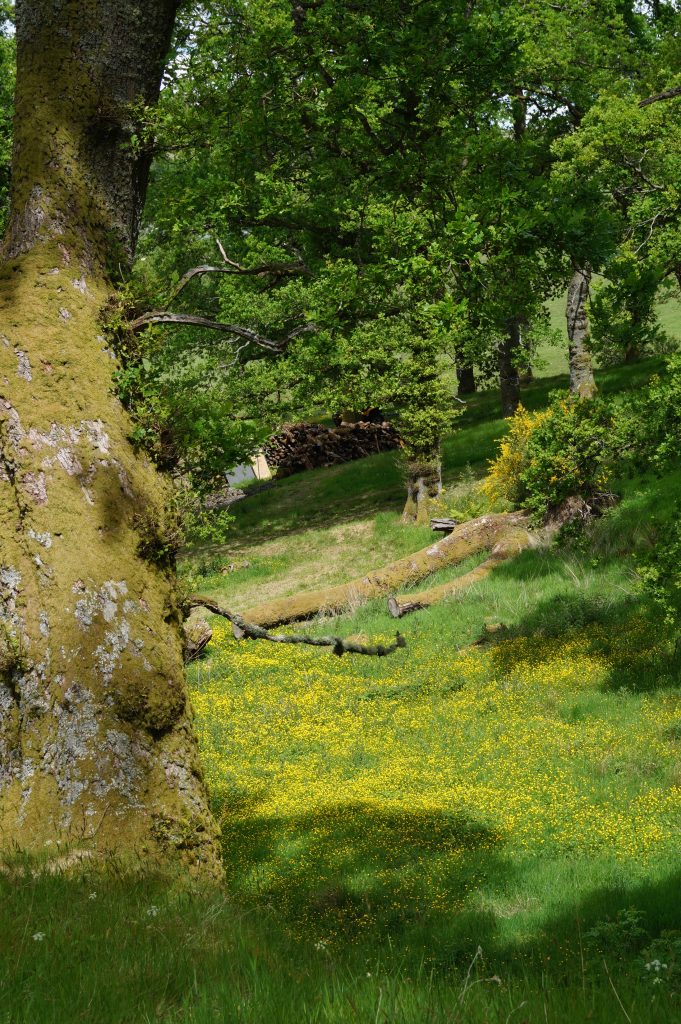As the owner and person responsible for the management of the Darach Mor woodland, I have put together a management strategy, which will be implemented during my lifetime. The description below is not definitive but more a guide used to focus on the tasks required to establish a quality stand of hardwood timber.
Although I don’t believe it to be significant, it should be noted that, although qualified as a Civil Engineer, I am a self-taught furniture maker and forestry manager. That said I have studied a few forestry books which I regularly refer too, when an answer to a particular question is required. I also read online forestry papers from time to time from purely an interest perspective. The main forestry reference books I tent to use are; Tall trees and small woods – William Mutch, Caring for small woods – Ken Broad, Oak: fine timber in 100 years – Jean Lemaire and recently, – Getting started in your own wood – Julian Evans
Overview
The land at Darach Mor is situated between Kippen & Fintry off the B822 at an elevation of between 120 – 180m above sea level. The topography of the site is a moderately steep, west facing hillside, steepest at its highest extent and levelling towards its base. The hillside is bisected by two deep gully’s which originate from free flowing upland streams on the North and a series of drains and a stream on the Southeast. The soils are relatively homogenous humic rich gley’s over a moderate – heavy silty clay. Although these are free draining, it does have some wetter areas with poorer drainage.
The existing native woodland extends to an area of approximately 5ha – 13 acres and is of predominantly Pedunculated Oak with Ash, Hazel, Hawthorn, Sycamore, Willow, Rowan, Bird Cherry and Alder within the gullys. Norway Spruce, Sitca Spruce and Japanese Larch are also present.
The upper slopes extending to 9.16ha – 22 acres were planted in March / April 2016 with a productive broadleaved mix comprising of Common Oak, Beech, Sycamore, Birch, Sweet Chestnut, Lime, Norway Maple and Gean (wild cherry). Native broadleaved species chosen were Alder, Willow, Downy Birch and Crab Apple with woody shrubs Hazel and Gelder Rose, totalling 23,525 saplings.
Both areas were deer fenced and rabbit proofed prior to planting. The woodland was designed by Eamon Wall & Co based in Dollar, in consultation with myself. The fencing was carried out by a local fencing contractor Mike Bisset contracting Ltd, organised by myself and Eamon organised the ploughing and tree planting of the area.

Management objective
The objective was to extend and expand the existing native oak woodland through the new woodland creation and enrichment planting providing the following benefits.
- To expand the existing oak and mixed woodlands
- To produce high quality commercial hardwood timber for future timber supply
- To provide firewood, charcoal and other woodland by-products
- To enhance and protect the landscape
- To regenerate an ancient dying woodland
- To provide additional aesthetic and amenity values to the landscape
- To introduce sound silvicultural practice as a basis of woodland economics
- To improve drainage
- To establish and develop an Apiary for pollination purposes
- To build a couple of isolated cabins for rental purposes, establishing a stable long-term income to fund the management objectives
Woodland maintenance
- Weeding – An initial treatment of approx. 2000 trees in the heaviest grass growth areas, with a residual herbiside and glyphosphate was made shortly after planting by Eamon’s wall’s team. We took over management from year 2 and decided to take a no chemical approach as part of our management strategy. The reasoning behind this decision was primarily based on observation. The trees within the longest grass, very quickly pushed through it, essentially encouraging rather than inhibiting growth, also the area that had been sprayed showed little effect. As we also take our water from a hillside spring, we were not keen to have any chemicals potentially leaching into our water supply.
- Cleaning – This involves cutting unwanted invading trees, in natural regeneration, in our case willow has started to regenerate in certain areas with gorse now spreading quickly across others. Although we plan to cut back some of the dominant gorse bushes at this time, we intend to leave the smaller bushes, as the flower produces both nectar and pollen, providing food for pollinators and other insects. This in turn will encourage greater biodiversity within the woodland.
- De-forking & Pruning – this is critical, particularly with hard woods to improve the timber product. It firstly helps improve the form of the tree by removing double leaders and encouraging the development of a straight undivided stem. Secondly it helps produce lower stems with no branches and therefore a large amount of clear timber, which will have a high value when harvested. This began in year 2 and will continue to around year 10 in our case.
- Thinning – this will begin after approximately year 10 and serves a number of objectives.
- To remove poorly formed, defective, diseased or damaged trees.
- To ensure that further growth is concentrated on trees with better form.
- To provide more growing space for final crop trees.
- To ensure satisfactory development of mixed stands and prevent faster growing trees from overcrowding slower ones.
- To prevent trees from becoming too tall and thin which increases the risk of windblow.
- Felling & post harvesting – The trees felled during the thinning stage will be cut to appropriate lengths and transported on a quad bike with a low impact forestry trailer ensuring no damage to the remaining trees and landscape. They will be moved to the yard at the bottom of the woodland where the logs will be graded for maximum financial return. This may include wood turning blanks, rustic woodland cabin balustrades, fire wood and charcoal production. The brash will be burned where the tree is dropped. It will be important to ensure that the timber removed will cover the costs of the thinning operation.
Regenerating the existing Ancient Woodland
When we took over the original ancient Oak stand it could be classified as a dying woodland, that is a woodland which has seen no new growth in a considerable time. This was primarily due to sheep farming which is dominant in the area, with any new growth being eaten as soon as it appeared. In addition the woodland floor was covered in windblown branches and trees. Most of the living trees had a number of dead branches protruding from them and there are also a number of dead standing trees. With the whole woodland now deer / sheep fenced and rabbit proofed, we have begun implementing our regeneration plan.
Our objectives are to:
- Clear the debris from the forest floor, leaving enough decaying logs for biodiversity and silvicultural reasons
- Remove the dead and dying trees to allow more light into the forest floor, assisting with natural regeneration
- Replant some of the cleared areas with mixed hardwoods
- Remove the lower and dead branches from the large standing oaks
- Explore the possibilities of coppicing the large stand of Hazel on the North West side of the woodland
- Create year round, cut grass walking paths, linking both woodlands and allowing easy access for amenity value and the quad bike and trailers for ongoing management purposes
Honey bees & Woodlands
In March / April of 2019 we reclaimed an area of ground in the lower field close to the workshop and next to the burn. Until then it was an overgrown area, full of thistles, nettles, docans, rashes and other rough grasses. We cut the area tight to the ground to encourage new grass to come though, keeping it short to discourage the weeds. We also laid a level slabbed base, for our bee hive stands, which were under construction in the workshop. Through that summer we planted 4 fruit trees and a number of bee friendly shrubs. We also created a wildlife pond close to this with a bridge crossing it connecting too, what is now the Apiary.

Having had a keen interest in Bee keeping for sometime, I had managed to collect a number of quite old hive boxes over the years, three of which were Langstrath design and three Nationals. These were all heat sterilised, sanded inside and out, painted on the outsides, waxed on the inside, repaired as necessary and filled with new frames and wax sheets.
The two bench style stands now complete, are designed to take three hives each. The idea being that once strapped down to the bench, the combined weight would give extra security in a rough Scottish winter. We also plan to set up a further three hive stand within the new woodland on the upper slopes at a later date. Our first colony arrived early in May 2019 to our delight and settled in nicely to their new home. Purchasing a starter colony of bees is reasonably expensive, so we will fill the other hives over the coming years as knowledge and finances permit.
Although we will be harvesting honey and wax from the Apiary, its main purpose will be to pollinate the woodland, orchard and surrounding plants in the area. The first batch of honey, harvested last year was remarkable, light in colour, not to sweet and tasted of wild flowers. We had just enough wax for a small candle.
Woodland Cabins
Implementing, developing and maintaining all our management objectives is a time consuming and potentially costly business. To achieve a sustainable future for Darach Mor woodland, it is critical that we find a way to create a long term income stream. To this end we obtained planning permission for an isolated, off grid woodland cabin. This will not only bring in a small regular income but allow others to experience the beauty and peace of this incredible place. We plan to build these ourselves cutting most of the wood required on site with our own sawmill and build the furniture in our workshop all from local timbers. Unfortunately the Coronavirus outbreak curtailed our plans to build the first cabin this year. We do however hope to get back on track as soon as reasonably possible and hopefully be ready for spring 2021. Watch this space!








